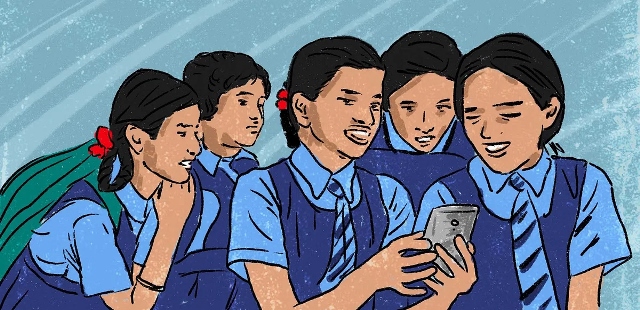Context:
- The Annual Status of Education Report (ASER) 2023 sheds light on concerning insights into the foundational skills of 14-18-year-olds in India, revealing that 26% struggle with basic reading. Data analysis shows diminishing literacy rates as students progress through higher grades, compounded by significant absenteeism and dropout rates. The report underscores the urgent need for targeted interventions to enhance foundational learning, promote reading habits, guide career aspirations, reshape vocational education perceptions, and leverage technology for educational advancement.
Foundational Learning Trajectories
- The Annual Status of Education Report (ASER) 2023 has revealed concerning insights into the foundational skills of 14-18-year-olds. According to the report, 26% of adolescents in this age group cannot read a standard two-level text in their regional language. Looking deeper into the historical context, an analysis indicates that the ability to acquire foundational skills diminishes as students progress through higher grades. For instance, data from 2018 reveals that 32% of standard seven and 27% of standard eight students could not read at the required level.
- The ASER survey further suggests that among 14-18 year olds lacking basic reading skills, 57% are enrolled in standard 10 or below, while 28% are not enrolled in any educational institution. Additionally, attendance rates in secondary grades (standards nine and 10) were recorded at a mere 60% in rural India in 2017-18 according to the National Sample Survey Office (NSSO). Therefore, merely focusing on school-based reading improvement programs may not suffice without addressing the underlying issues of absenteeism and dropout rates.
- Furthermore, ASER 2022 data highlights that among children in standard eight who struggle with reading, nearly half are capable of reading a simpler text (standard one level). This emphasizes the need for targeted interventions such as guided practice and encouragement to develop and sustain reading abilities.
Promoting Reading Habits and Resources
- Access to Reading Materials: Access to reading materials and books plays a pivotal role in nurturing reading habits and improving literacy levels. However, ASER 2022 underscores that only a small fraction of rural households possess reading materials beyond school textbooks. Establishing community libraries can be transformative, but their effectiveness depends on proper management by dedicated individuals who can create engaging spaces conducive to reading and critical thinking.
- Access to Reading Materials: Effective community libraries go beyond physical setups; they cultivate environments that inspire and support readers of all ages. By fostering a reading culture within homes and neighborhoods, these initiatives can significantly contribute to enhancing literacy rates among adolescents.
Career Aspirations and Guidance
- Educational Aspirations: ASER 2023 sheds light on the aspirations of 14-18 year olds regarding education and careers. Notably, over 60% of surveyed adolescents aspire to pursue a college education, with a higher percentage of girls expressing this ambition compared to boys.
- Career Preferences: Career aspirations among boys often lean towards joining the police or defense forces, whereas girls gravitate towards professions like teaching or medicine.
- Exposure to Professions: However, a significant proportion of adolescents lack exposure to individuals working in their desired professions. This highlights the importance of mentorship and guidance in helping youth evaluate and pursue their aspirations effectively.
Perceptions of Vocational Education
- Regional Perceptions: The report also captures perceptions of vocational education among adolescents in different districts. While negative stereotypes surround vocational education in some regions, positive experiences in other areas demonstrate the potential of context-driven vocational courses to shift perceptions and foster aspirations.
- Context-Driven Courses For instance, vocational courses in tourism and hotel management introduced at an early stage in Solan (Himachal Pradesh) have positively influenced students' perspectives and aspirations in related fields. Incorporating on-the-job training and career information into vocational programs can significantly enhance their appeal and utility among adolescents.
Harnessing Technology for Education
- Smartphone Use The increasing accessibility of smartphones among youth presents an opportunity to leverage technology for educational purposes. ASER 2023 highlights that while teens primarily use smartphones for entertainment and social media, there's untapped potential to align digital platforms with educational objectives.
- Educational Opportunities: By integrating digital tools into educational settings, such as offering online courses and resources aligned with students' career interests, schools and colleges can engage adolescents more effectively in learning activities that support their aspirations. For example, while in school or college, youth who wish to become nurses can undertake online foundational courses on nursing and related subjects, or even relevant short modules such as administering first aid.
Conclusion
- In conclusion, the data from ASER 2023 underscores critical challenges in adolescent education and aspirations. It emphasizes the need for targeted interventions to improve foundational skills, promote reading habits, provide career guidance, reshape perceptions of vocational education, and harness technology for educational purposes.
- To address these challenges effectively, stakeholders must move beyond identifying problems and toward actionable strategies that empower adolescents to achieve their educational and career goals. This requires collaborative efforts from policymakers, educators, communities, and technology providers to create holistic solutions that support the holistic development and future success of India's youth.
|
Probable Questions for UPSC Mains Exam- 1. How can targeted interventions address the declining foundational skills among 14-18-year-olds, as highlighted by ASER 2023? ( 10 Marks, 150 Words) 2. What strategies can be implemented to promote reading habits and improve literacy rates among adolescents, particularly in rural areas with limited access to reading materials? ( 15 Marks, 250 Words) |
Source: The Hindu







